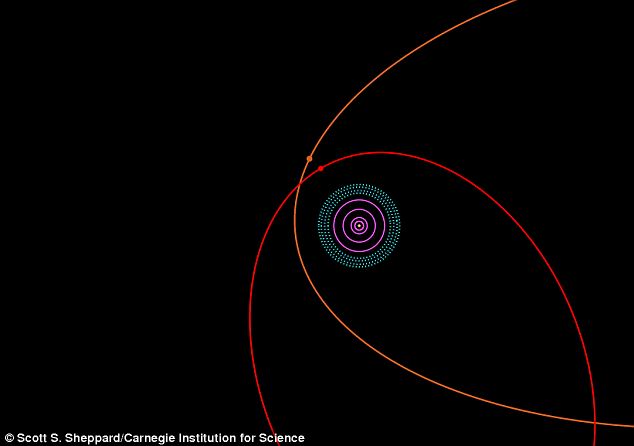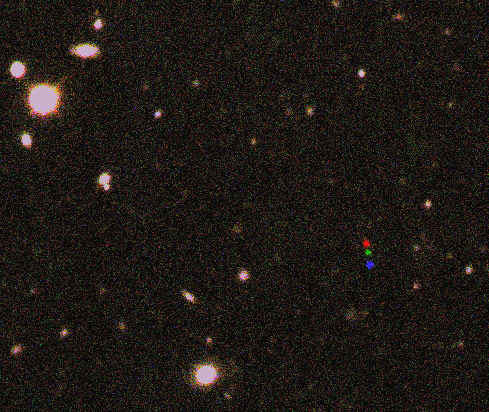March 27, 2014 – The name doesn’t fit with what we normally choose when we find a planet, even a dwarf one. It has been dubbed 2012 VP113. And it isn’t anyplace where we normally find planets or dwarf planets. It is well beyond the Kuiper Belt where Pluto resides. This one appears to lie at the inner edge of the Oort Cloud and like Sedna, another dwarf planet discovered in 2003, this new one has a highly irregular orbit as you can see from the image below. In this picture you see the Sun with the gas giant planets represented in purple and the Kuiper Belt objects in blue dots. The orbit of Sedna appears in orange. 2012 VP113’s orbit appears in red.
2012 VP113 is approximately 450 kilometers (280 miles) in diameter. Its orbit takes it to its closest approach to the Sun at a distance of 80 AUs. That’s 4 AUs further out than Sedna. Unfamiliar with AU? It stands for astronomical unit of which one equals the distance from Earth to the Sun. When compared to Pluto which orbits at a distance of 29 AUs you get a real sense of just how remote is this new discovery.
The inner edge of the Oort Cloud is about equivalent to where 2012 VP113 lies. With it and Sedna already discovered astronomers are convinced that it is only a matter of time before many more Oort objects are discovered at these and further distances from the Sun. Speculation is there may be hundreds if not thousands in the outer reaches of our near space environment with some as large as Mars or even Earth. One recent survey indicates 900 have been identified with some speculating that one may be an even larger planet circling the Sun from beyond the Oort Cloud, either ejected from the inner Solar System, or a rogue captured by our Sun as it drifted by.
The findings appear in the international weekly journal of science, Nature. In the image below, the red, green and blue dots represent the track of this new dwarf planet. The picture is a combination of three separate images taken of the same night sky over a two-hour period. The visible stars and galaxies in the combined image are static. But 2012 VP113 can be seen to be moving from the red position to the green and then the blue.












